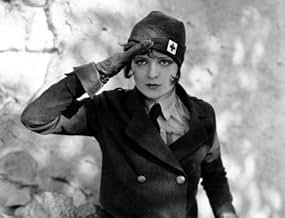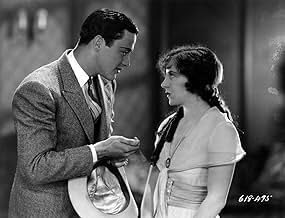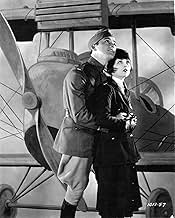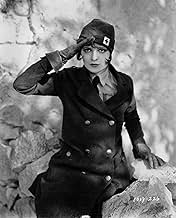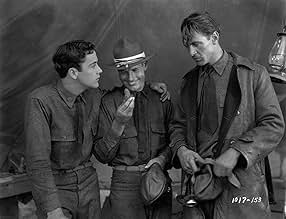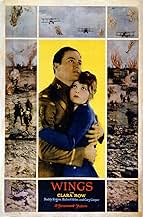NOTE IMDb
7,5/10
15 k
MA NOTE
Deux jeunes hommes, l'un riche, l'autre pauvre, amoureux de la même femme, deviennent pilotes de chasse pendant la Première Guerre mondiale.Deux jeunes hommes, l'un riche, l'autre pauvre, amoureux de la même femme, deviennent pilotes de chasse pendant la Première Guerre mondiale.Deux jeunes hommes, l'un riche, l'autre pauvre, amoureux de la même femme, deviennent pilotes de chasse pendant la Première Guerre mondiale.
- Réalisation
- Scénario
- Casting principal
- Récompensé par 2 Oscars
- 9 victoires et 1 nomination au total
Charles 'Buddy' Rogers
- Jack Powell
- (as Charles Rogers)
Charles Barton
- Soldier Flirting with Mary
- (non crédité)
Thomas Carr
- Aviator
- (non crédité)
Thomas Carrigan
- Undetermined Role
- (non crédité)
Margery Chapin
- Peasant Woman
- (non crédité)
Andy Clark
- Undetermined Role
- (non crédité)
Avis à la une
This film is, no doubt, a timeless triumph of the silent cinema. I first saw it three years ago and have seen it at least 30 times since then. I've only looked back to see that I have it in my collection...but not on DVD! These studios need to start thinking back to the days in which movies as good as these were made and stop producing so much garbage that they think will make tons of money without considering whether it's done right or not. This film taught me just how important gesture and body language can be in the acting world, whether it be on film or on stage. I know just how "in-character" an actor is just by looking at their face, their eyes, and how they're written in the script. Don't get me wrong, people can overact and underact in certain parts, but if you do anything without considering your character's expression or mood, regardless of whether or not your voice is unbearable to hear, you will never see success past the sound of crickets hiding in the audience. The industry knew that sound was coming. Most didn't accept this truth, but they knew it alright! "Wings" reminds those who've seen it, as with most classics of the silent cinema, that ACTIONS SPEAK A MUCH GREATER VOLUME THAN THE SPOKEN WORD. I've said all I need to say, and now I'll let this picture speak for itself.
The first movie to win the Best Picture Oscar was this terrific WW1 aviation epic from Paramount Pictures and director William Wellman. Charles "Buddy" Rogers stars as Jack Powell, a small town guy who quickly joins up for the Air Corps when the US enters World War One. He's joined by David Armstrong (Richard Arlen), the town rich kid. Both Jack and David are in love with Sylvia Lewis (Jobyna Ralston), although Sylvia only feels the same about David. Top-billed Clara Bow is Mary Preston, Jack's girl-next-door who is secretly in love with him, so much so that she joins the ambulance corps in order to get sent overseas, too. Someone should have pointed out to her just how big France is. Jack and David become close friends in the crucible of war, but life is often short for a fighter pilot.
The aerial photography is truly incredible, and is the real highlight, although the ground warfare scenes are huge in scope and well-choreographed. The performances are all very good. Rogers and Arlen have a real bromance, and both exude star power. Cooper made quite a splash in an early, very small role. Bow is fun, but her scenes almost seem to be from a different movie. The movie also won an Oscar for Best Engineering Effects, a precursor to the special effects award. While this doesn't quite rise to the epic heights of The Big Parade, this is very good, and makes a good companion piece with that film in their depiction of "the Great War". Recommended.
The aerial photography is truly incredible, and is the real highlight, although the ground warfare scenes are huge in scope and well-choreographed. The performances are all very good. Rogers and Arlen have a real bromance, and both exude star power. Cooper made quite a splash in an early, very small role. Bow is fun, but her scenes almost seem to be from a different movie. The movie also won an Oscar for Best Engineering Effects, a precursor to the special effects award. While this doesn't quite rise to the epic heights of The Big Parade, this is very good, and makes a good companion piece with that film in their depiction of "the Great War". Recommended.
For a feeling of what the silents were really like, look for the version of this film with Gaylord Carter performing the score on a Wurlitzer Theater Organ. Carter recorded this version in the 1980's when he was in his 80's. Amazing performance - basically 120 minutes of live, somewhat improvised music with establihed themes for each character. Incidental music was improvised live combining themes from the various characters.
Carter was one of the last musicians that performed during the silent era. Very few musicians understand how difficult this art form was, and Gaylor was one of the best. Each showing of the film was an original, never before heard version due to the improvisational nature of the music. The stamina required to play live music, on 3, 4 or even 5 keyboards with a pedal board and dozens of stops, thousands of pipes for over two hours cannot be overstated. Especially when one of these performers were expected to do so 3 or more times a day!
Orchestras are all well and good, but few theaters could afford them - Wurlitzer (and a few other companies) sold 40,000 instruments to theaters world wide during the 20's, and chances are, 90% of screenings of this film were accompanied by a theater organ.
Carter was one of the last musicians that performed during the silent era. Very few musicians understand how difficult this art form was, and Gaylor was one of the best. Each showing of the film was an original, never before heard version due to the improvisational nature of the music. The stamina required to play live music, on 3, 4 or even 5 keyboards with a pedal board and dozens of stops, thousands of pipes for over two hours cannot be overstated. Especially when one of these performers were expected to do so 3 or more times a day!
Orchestras are all well and good, but few theaters could afford them - Wurlitzer (and a few other companies) sold 40,000 instruments to theaters world wide during the 20's, and chances are, 90% of screenings of this film were accompanied by a theater organ.
My cousin Clifford M. Blackstone Sr. was the person who filmed the flight scenes in this movie. His son Cliff sent me photographs of his Dad filming this movie as well as a few others with Paramount Studios. Cliff said his Dad was put in an airplane and sent up in the air to crank out all those amazing flight scenes. He said his Dad told him he wasn't even secured in the plane. Cliff Blackstone Sr. is from Mercer County, PA and Cliff Jr. says his Dad was the man who created the zoom lens. Just a side bar, Clara Bow, the lead actress in Wings, had a hairdresser Maryl who Clara introduced to Cliff Sr. Cliff Sr. married Maryl and they had Cliff Jr. It is really a nice story.
Wings (1927)
An epic WWI movie that uses all the classic approaches to a war film and has a lot of great battle footage. It's a tale of rivalry over a girl, of fighting for country (and against the Germans), and of facing death. There are several scenes that make death really gruesome--blood spurting from a pilot's mouth, or a man crushed under a tank--that took me by surprise. I didn't know that such a mainstream American film would go there.
"Wings" is in a way exactly what American movies would look like thereafter--not just war movies, but all of them. By that I don't mean directors studied this movie and it was the inspiration from here on. But just that the story line, the romance, and even the filming, adventurous but straight on, with more attention to characters and plot than visual effect, all of this would be how films would be made for decades. Including many more by the director, William Wellman, who is one of handful of truly expert but never quite daring and inventive directors of classic Hollywood.
To back this up neatly, compare this film to the other film that jointly won Best Picture this year (the first year the Oscars were given, and the only year when the best picture category had two separate parts). That is Murnau's "Sunrise." Never mind which is better ("Sunrise," easily by most accounts). Notice how this film is utterly conservative and "conventional" in its approach to the art of making movies. It's superbly well done, but well within the rules of the time. Yes, there are moments of inspiration, including some double-exposed stock where a scene takes play in the sky over another scene on the ground. But "Sunrise" shows the lyrical art of the camera, and of editing, and of a less literal kind of storytelling. "Wings" is probably much easier to watch for most people--that's the idea. But "Sunrise" is far more engaging and complex, begging you to watch it twice. I doubt anyone needs to see "Wings" a second time.
But then, I have to admit the acting makes more sense in this film. The naturalism of the three leads helps you get emotionally involved. The most famous by far is the woman, Paramount's biggest star, Clara Bow. She doesn't get a huge role (the men do the fighting and flying) but at least when she's there she's a treat. The flying is actually done by the actors, and many of the people involved were veterans (including Wellman, who was a WWI pilot himself).
It's pretty exciting to find this so exciting all these years later. Give it a look. It's been restored really well (there's even a new Blu-Ray release). And it looks great. Don't expect anything new from the story or the filmmaking, but just expect a really well made high drama affair.
An epic WWI movie that uses all the classic approaches to a war film and has a lot of great battle footage. It's a tale of rivalry over a girl, of fighting for country (and against the Germans), and of facing death. There are several scenes that make death really gruesome--blood spurting from a pilot's mouth, or a man crushed under a tank--that took me by surprise. I didn't know that such a mainstream American film would go there.
"Wings" is in a way exactly what American movies would look like thereafter--not just war movies, but all of them. By that I don't mean directors studied this movie and it was the inspiration from here on. But just that the story line, the romance, and even the filming, adventurous but straight on, with more attention to characters and plot than visual effect, all of this would be how films would be made for decades. Including many more by the director, William Wellman, who is one of handful of truly expert but never quite daring and inventive directors of classic Hollywood.
To back this up neatly, compare this film to the other film that jointly won Best Picture this year (the first year the Oscars were given, and the only year when the best picture category had two separate parts). That is Murnau's "Sunrise." Never mind which is better ("Sunrise," easily by most accounts). Notice how this film is utterly conservative and "conventional" in its approach to the art of making movies. It's superbly well done, but well within the rules of the time. Yes, there are moments of inspiration, including some double-exposed stock where a scene takes play in the sky over another scene on the ground. But "Sunrise" shows the lyrical art of the camera, and of editing, and of a less literal kind of storytelling. "Wings" is probably much easier to watch for most people--that's the idea. But "Sunrise" is far more engaging and complex, begging you to watch it twice. I doubt anyone needs to see "Wings" a second time.
But then, I have to admit the acting makes more sense in this film. The naturalism of the three leads helps you get emotionally involved. The most famous by far is the woman, Paramount's biggest star, Clara Bow. She doesn't get a huge role (the men do the fighting and flying) but at least when she's there she's a treat. The flying is actually done by the actors, and many of the people involved were veterans (including Wellman, who was a WWI pilot himself).
It's pretty exciting to find this so exciting all these years later. Give it a look. It's been restored really well (there's even a new Blu-Ray release). And it looks great. Don't expect anything new from the story or the filmmaking, but just expect a really well made high drama affair.
Oscars Best Picture Winners, Ranked
Oscars Best Picture Winners, Ranked
See the complete list of Oscars Best Picture winners, ranked by IMDb ratings.
Le saviez-vous
- AnecdotesWas lost for decades until a copy was discovered languishing in the Cinematheque Francaise film archive in Paris, France.
- GaffesThe film is set during the years 1917-1918, but most of the female civilian clothes and hairstyles are contemporary with the late 1920s, particularly the clothes worn by Clara Bow in the home sequences and in the Folies Bergère sequence. Bow and almost all the other female characters have bobbed hair, common in 1927 but almost non-existent during World War One.
- Citations
Sergeant in Mervale: Hey, if youse guys need kissin' *I'll* kiss you - wit' a gun-butt!
- Versions alternativesSome showings have trimmed Clara Bow's brief topless scene.
- ConnexionsEdited into L'aigle et le vautour (1933)
- Bandes originalesThe Star Spangled Banner
(credited on 2012 restored score only)
Written by John Stafford Smith & Francis Scott Key
Meilleurs choix
Connectez-vous pour évaluer et suivre la liste de favoris afin de recevoir des recommandations personnalisées
- How long is Wings?Alimenté par Alexa
Détails
Box-office
- Budget
- 2 000 000 $US (estimé)
- Montant brut mondial
- 1 684 $US
- Durée2 heures 24 minutes
- Couleur
- Mixage
- Rapport de forme
- 1.33 : 1
Contribuer à cette page
Suggérer une modification ou ajouter du contenu manquant







